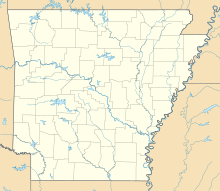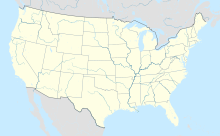Battle of Massard Prairie
| Battle of Massard Prairie | |||||||
|---|---|---|---|---|---|---|---|
| Part of the American Civil War | |||||||
|
|||||||
| Belligerents | |||||||
|
|
|
||||||
| Commanders and leaders | |||||||
| Major David Mefford | Richard Montgomery Gano | ||||||
| Strength | |||||||
| 6th Kansas Cavalry (about 200 cavalry) | 600 cavalry (possibly more) | ||||||
| Casualties and losses | |||||||
| 10 killed 15 wounded 127 captured |
7 killed 26 wounded |
||||||
|
|
|||||||
The Battle of Massard Prairie was a battle of the American Civil War. It was fought on July 27, 1864, at Massard Prairie in Sebastian County, Arkansas, near Fort Smith. Confederate troops led by Brigadier-General Richard Montgomery Gano successfully launched a surprise attack on a Union camp held by four companies of the 6th Kansas Cavalry, capturing prisoners and equipment.
The battle exemplified the hit-and-run nature of the Civil War in Arkansas on the western border: this was a war of raids and ambushes involving small forces, not drawn-out, large-scale battles. As a Confederate victory, it also demonstrated the difficulty faced by Union units attempting to exert control over the state during the war’s later stages.
Following the failure of Union General Frederick Steele’s Camden Expedition in April 1864, Confederate and Union roles on the frontier reversed. Union forces now attempted to hold the line of the Arkansas River against Confederate raids, while emboldened Confederates became more aggressive in their operations.
An opportunity presented itself to the Confederates in late July 1864. In response to a shortage of both horses and forage, 200 Union cavalrymen of the Sixth Kansas Cavalry encamped at Massard Prairie, less than eight miles south of Fort Smith (Sebastian County). The unit’s horses could graze on the prairie, and the advanced position also provided security for the Union garrison at Fort Smith. However, the position was exposed to attack. Recognizing this, Confederate Brigadier General Douglas H. Cooper ordered Brigadier General Richard Gano to attack the Union camp.
...
Wikipedia


